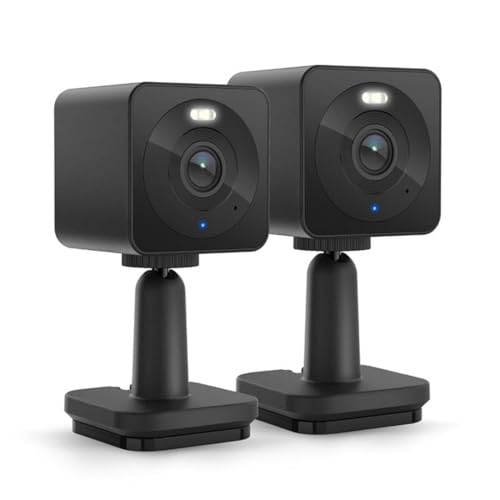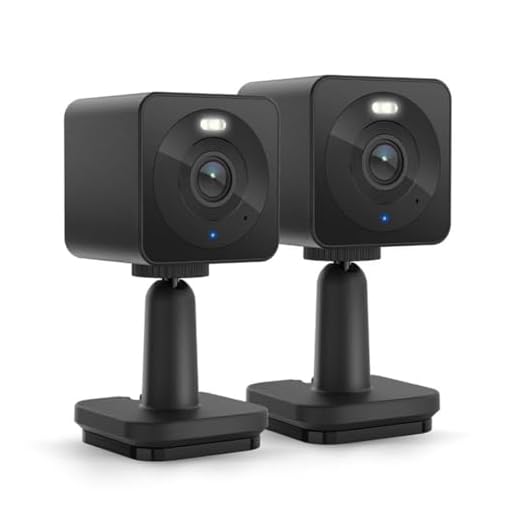


Having a reliable internet connection for your security cameras is essential for ensuring the safety and security of your home or business. A weak or unstable connection can result in lagging video feeds, delayed notifications, and overall ineffective surveillance. To maximize the performance of your security cameras, it’s important to optimize your internet connection.
There are several steps you can take to boost your security camera’s internet connection and improve its reliability. From positioning your router strategically to investing in a Wi-Fi extender, these tips can help you achieve a seamless surveillance experience.
By following these guidelines, you can ensure that your security cameras are always connected and ready to capture any suspicious activity. Don’t let a poor internet connection compromise your safety – take action today to enhance your security camera system.
Step-by-step guide on how to secure your security cameras internet
1. Change default login credentials: The first step to secure your security cameras internet is to change the default username and password. Use strong, unique passwords that are not easily guessable.
2. Update camera firmware: Regularly check for firmware updates for your security cameras and install them promptly. Updated firmware often includes security patches that can help protect your cameras from vulnerabilities.
3. Enable encryption: Make sure that your security cameras use encryption for data transmission. Enable encryption protocols such as WPA2 or WPA3 to secure the data being sent over the internet.
4. Set up a VPN: Consider setting up a Virtual Private Network (VPN) to create a secure connection between your security cameras and the internet. This adds an extra layer of security and privacy to your camera feed.
5. Use strong network security: Secure your home network with a strong password, firewall, and regular network monitoring. Limit access to your security cameras to trusted devices and users only.
6. Disable remote access: If you do not need remote access to your security cameras, consider disabling this feature to reduce the risk of unauthorized access. Only enable remote access when necessary and use secure methods to access your cameras remotely.
Check your camera settings
One of the first steps to troubleshoot your security camera’s internet connection is to check the camera settings. Make sure that the camera is properly configured to connect to your Wi-Fi network. Access the camera’s settings through its web interface or mobile app and verify the network settings, including the SSID, password, and encryption type. Ensure that the camera is within the range of your Wi-Fi signal and that there are no obstructions blocking the signal.
Update your camera firmware regularly
One of the most important steps in ensuring the security of your security cameras is to regularly update the firmware. Manufacturers release firmware updates to fix security vulnerabilities and improve the overall performance of the cameras. By keeping your firmware up to date, you can protect your cameras from potential hacks and unauthorized access.
Check the manufacturer’s website regularly for any firmware updates and follow the instructions provided to install them. Set up automatic updates if possible to ensure that your cameras are always running the latest firmware version. Remember that neglecting firmware updates can leave your security cameras vulnerable to cyber attacks.
Use strong and unique passwords
One of the most important steps in securing your security cameras is to use strong and unique passwords. Avoid using default passwords or common phrases that are easy to guess. Create a password that is at least 12 characters long and includes a mix of letters, numbers, and special characters.
Enable two-factor authentication
Another layer of security you can add is enabling two-factor authentication for your security camera system. This adds an extra step to the login process, requiring a code sent to your phone or email in addition to your password.
Enable two-factor authentication
One of the most effective ways to enhance the security of your security cameras’ internet connection is to enable two-factor authentication (2FA). This adds an extra layer of protection beyond just a password, making it much harder for unauthorized users to gain access to your camera system.
With 2FA enabled, even if someone manages to obtain your password, they will still need a second form of verification to log in, such as a unique code sent to your phone or email. This significantly reduces the risk of unauthorized access to your security cameras.
Secure your home network
Securing your home network is crucial to protecting your security cameras from unauthorized access. Here are some tips to help you secure your network:
1. Change default passwords
One of the first steps to securing your home network is to change the default passwords on your router and security cameras. Default passwords are easy to guess and can make your devices vulnerable to hacking.
2. Enable encryption
Make sure your Wi-Fi network is encrypted with WPA2 or WPA3 encryption. Encryption helps protect your network from eavesdropping and unauthorized access.
| 3. Update firmware | Regularly check for firmware updates for your router and security cameras. Updates often include security patches that can help protect your devices from vulnerabilities. |
| 4. Use a firewall | Enable the firewall on your router to help block unauthorized access to your network. A firewall adds an extra layer of security to your home network. |
Install Antivirus Software
One of the most important steps you can take to secure your security cameras’ internet connection is to install antivirus software on the devices you use to access the camera feeds. Antivirus software helps protect your devices from malware, viruses, and other online threats that could compromise the security of your cameras.
Steps to install antivirus software:
| 1. | Choose a reputable antivirus software program and download it from a trusted source. |
| 2. | Follow the installation instructions provided by the antivirus software. |
| 3. | Run a full system scan to check for any existing threats on your devices. |
| 4. | Set up regular scans and updates to ensure your devices are protected at all times. |
Regularly monitor your camera activity
One of the most important steps in maintaining the security of your security cameras is to regularly monitor the activity they capture. By checking the footage on a regular basis, you can quickly identify any suspicious or unusual behavior and take appropriate action.
Set aside time each week to review the footage from your security cameras. Look for any unfamiliar individuals, strange movements, or other signs of potential security threats. If you notice anything out of the ordinary, investigate further or contact the authorities if necessary.
Benefits of monitoring camera activity:
- Early detection of security breaches
- Peace of mind knowing your property is being monitored
- Ability to take proactive security measures
Keep your camera software up to date
One of the most important steps in securing your security cameras is to regularly update the camera’s software. Manufacturers often release software updates that include security patches and bug fixes to protect your camera from vulnerabilities.
Make sure to check for updates regularly and install them as soon as they become available. This will help ensure that your camera is running the latest, most secure software and reduce the risk of unauthorized access or hacking.
Avoid public Wi-Fi networks for camera access
When accessing your security cameras remotely, it is important to avoid using public Wi-Fi networks. Public Wi-Fi networks are often unsecured and can be easily compromised by hackers. If you connect to your security cameras through a public Wi-Fi network, you are putting your cameras and your home network at risk.
Instead, always use a secure and encrypted network connection when accessing your security cameras remotely. Consider setting up a VPN (Virtual Private Network) to ensure a secure connection between your device and your cameras. This will help protect your data and prevent unauthorized access to your cameras.







